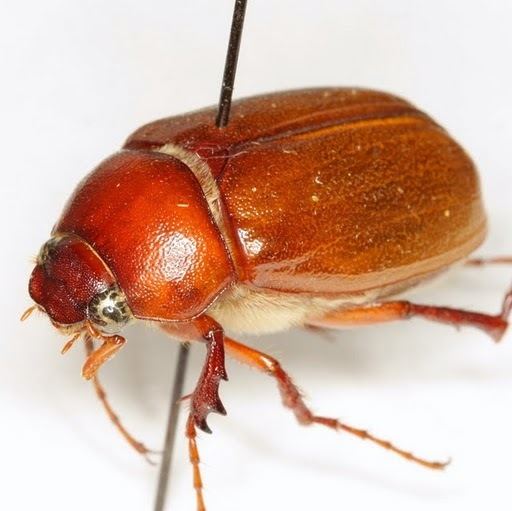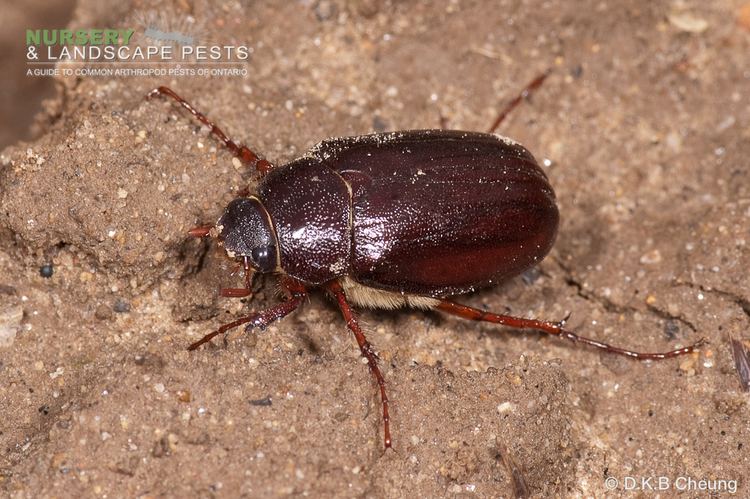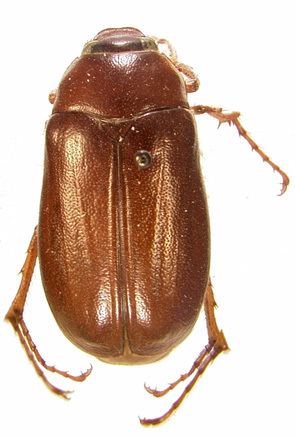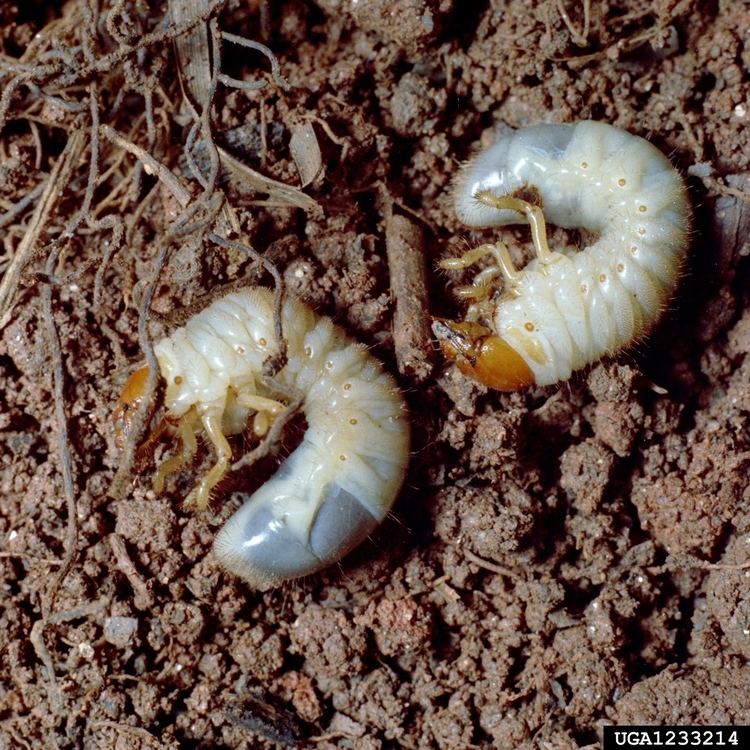Order Beetle Rank Genus | Scientific name Phyllophaga Higher classification Melolonthini | |
 | ||
Similar Beetle, Insect, Scarabs, Ten‑lined June beet, Melolonthinae | ||
May beetle scarabaeidae phyllophaga locomotion
Phyllophaga is a very large genus (more than 260 species) of New World scarab beetles in the subfamily Melolonthinae. Common names for this genus and many other related genera in the subfamily Melolonthinae are May beetles, June bugs, and June beetles. They range in size from 12 to 35 mm (0.47 to 1.38 in) and are blackish or reddish-brown in colour, without prominent markings, and often rather hairy ventrally. These beetles are nocturnal, coming to lights in great numbers.
Contents

The generic name is derived from the Greek words phyllon (φυλλον), which means "leaf", and phagos (φαγος), which means "eater", with a plural ending.

Lifecycle

The lifecycle takes about one year. Females lay 60 to 75 eggs over a period of about two weeks in midsummer. The white egg at first is elliptical (1.5 mm by 2.1 mm) but becomes more spherical as the larva inside develops. These hatch into white grubs about 18 days after laying. The newly hatched larvae are 8 mm long and grow to a length around 40 mm. Whitish with a brownish-black head, the grubs have conspicuous brown spiracles along the sides of their bodies. They molt twice before winter. The third larval stage lasts nearly nine months, after which they pupate. They hibernate overwinter as grubs, that may become active on warm winter days. They increase their activity in the spring.
Diet

The adults are chafers, feeding on foliage of trees and shrubs. They may cause significant damage when emerging in large numbers. The larvae (called white grubs) feed on the roots of grasses and other plants. The insects pupate underground in the fall and emerge as adults the following spring. To test for the presence of these beetles, drenching an area of lawn with water will cause larvae to emerge at the surface. The adult beetles are very clumsy, both on land and especially in the air.

Adult chafers eat the leaves and flowers of many deciduous trees, shrubs, and other plants. However, white grubs (reaching 40–45 mm long when full grown) live in the soil and feed on plant roots, especially those of grasses and cereals, and are occasional pests in pastures, nurseries, gardens, and golf courses. An obvious indication of infestation is the presence of birds, such as crows, peeling back the grass to get to the grubs. The injury consists of poorly growing patches that quickly turn brown in dry weather. The grubs can be found immediately below the surface, usually lying in a characteristic comma-like position.
The grubs sometimes attack vegetables and other garden plants, e.g. lettuce, raspberries, strawberries, potatoes, and young ornamental trees. Injury to the roots and rootstock causes small saplings and tender tap-rooted plants like lettuce to wilt suddenly or to show stunted growth and a tendency to shed leaves prematurely. Plants growing in rows are usually attacked in succession as the grubs move along from one plant to the next. Chafer grubs feed below ground for 3–4 years before changing into adult beetles.
Predators
Some Pyrgotidae flies are endoparasitoids to these and other related beetles. The flies pursue the beetles in flight to lay an egg on the beetle's back under the elytra where the beetle cannot reach it. The egg hatches and the fly larva enters the body cavity of the beetle, feeding on and eventually killing the host before pupating. Wasps in numerous families, including Pelecinidae, Scoliidae, and Tiphiidae, are parasitoids of Phyllophaga grubs. They are also known to be prey to a large variety of amphibians.
Some small mammals, including skunks and moles, feed on the grubs.
